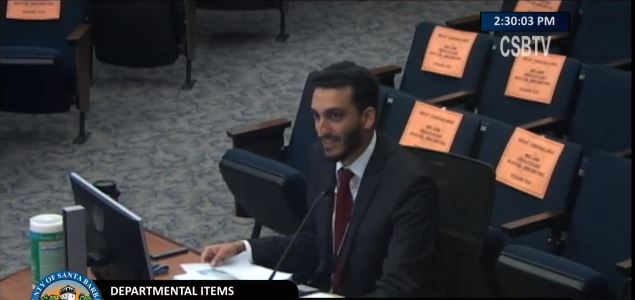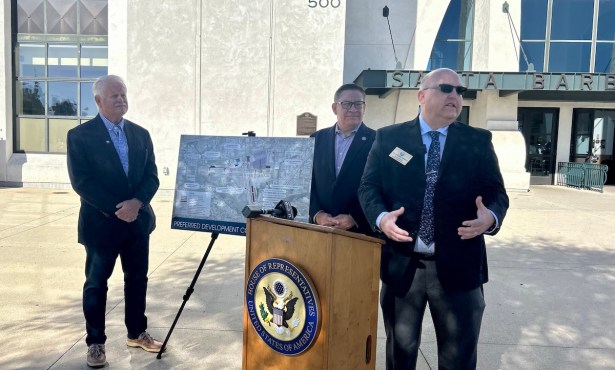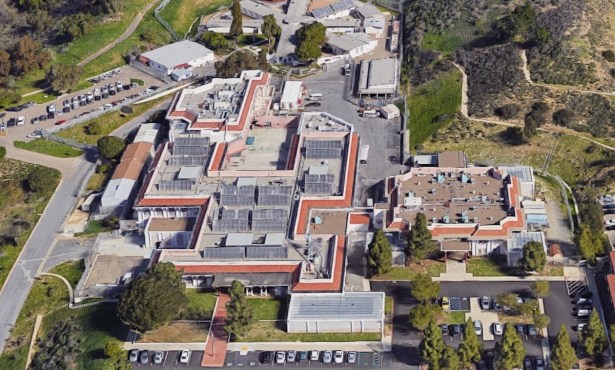County Adopts New Traffic Measurement Standard
The Difference Between Level of Service and Vehicle Miles Traveled

Consider, for a moment, which of these you prefer: having convenient driving conditions whenever you get behind the wheel, or building a community where people rarely need to drive in the first place. In a place with the level of commuter miles, tourism traffic, and associated parking difficulties and transportation emissions of Santa Barbara County, it’s become a relevant question.
On Tuesday, the County Board of Supervisors went for the second choice, approving an amendment to the county’s Environmental Thresholds and Guidelines Manual that will give greater consideration to the environmental cost of driving, rather than to drivers’ experiences on the road, when assessing the impacts of new transportation and land development projects. The motion to approve passed with four votes in favor and one abstention from 4th District Supervisor Peter Adam.
The amendment brings Santa Barbara County’s environmental review processes into compliance with California Senate Bill 743, which in 2013 updated the standard by which a development’s impacts to transportation are evaluated under the California Environmental Quality Act (CEQA).
Get the top stories in your inbox by signing up for our daily newsletter, Indy Today.
The old metric for evaluating those impacts was called Level of Service, or LOS — essentially a measure of how the project would affect the concentration of traffic on local roadways. A road-widening project, for instance, or a new grocery store predicted to divert traffic from congested areas, would positively impact drivers’ experiences and score high on the LOS scale.

Senate Bill 743 replaced Level of Service with Vehicle Miles Traveled, or VMT, which accounts for both the number of vehicles on the road and the miles they’re driving. Projects that reduce or add little to those figures relative to overall regional Vehicle Miles Traveled will receive a better rating, meaning the location of a project dramatically influences its VMT score. “It’s basically trying to get jobs and housing together,” explained Lisa Plowman, County Planning and Development executive director. For example, an employment-related development in Vandenberg Village “could be a VMT reducer because people would not necessarily have to commute for employment.”
The change reflects California’s goals of reducing greenhouse-gas emissions from transportation, promoting urban density, and improving public health through “active transportation” like biking and walking.
It also bears special significance for our region’s climate: Santa Barbara County currently ranks as one of the fastest-warming counties in the lower 48 due in large part to high transportation emissions, which account for more of our greenhouse-gas emissions than any other source. Adopting a development strategy that minimizes vehicle miles could help bring those numbers down.
Conforming to state recommendations, however, won’t be easy. Mark Friedlander of the County Long Range Planning Division reported that the Vehicle Miles Traveled in our county sits 22-24 percent higher than the regional average and that this gap is expected to widen. “This was the first sign that the state’s recommendations might present some challenges in practice for the county,” he said, adding that California’s Office of Planning and Research “recommends VMT thresholds with reductions below a regional average. That can be a high bar to meet when we know VMT is inherently higher in the county due to the more rural land-use nature.”
Not all project types are subject to the same standards. For employment and residential developments, the state Office of Planning and Research recommends that they score 15 percent below a county’s overall Vehicle Miles Traveled level — the logic being that adding homes and offices also adds cars to the road. Retail developments, however, which may simply redirect people’s existing errand runs but not add traffic or miles, would meet those recommendations as long as they cause no net increase to county VMT.
For projects that fail to meet Vehicle Miles Traveled thresholds, mitigation options may include providing vanpooling services, adding pedestrian facilities, or, in the case of employment developments, offering telecommuting options to employees. Friedlander acknowledged the difficulty of predicting the effectiveness of these strategies, since they depend largely upon the individuals participating. Where these might fail, potential longer-term strategies like VMT credit trading and impact fees might eventually be implemented to pick up the slack.

Supervisors Joan Hartmann and Das Williams both voted in favor of the change but asked whether it would come at any sacrifice to drivers’ experiences such as increased congestion as a trade for urban density. Daniel Klemann, deputy director of Long Range Planning, answered that while Level of Service will not be used in environmental review processes under CEQA, it will still be used as a metric in county planning guidelines to ensure developments adhere to county policies on matters like traffic congestion and road size.
Klemann admitted this might pose challenges to developers seeking to meet both requirements: “On the one hand, applicants are going to have to show how they’re reducing traffic congestion pursuant to our LOS policies, yet on the other hand, from a CEQA perspective, they’ve got to show how they’re meeting that … to avoid a significant [VMT] impact under CEQA.”




You must be logged in to post a comment.